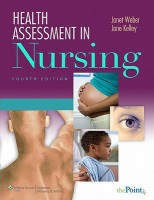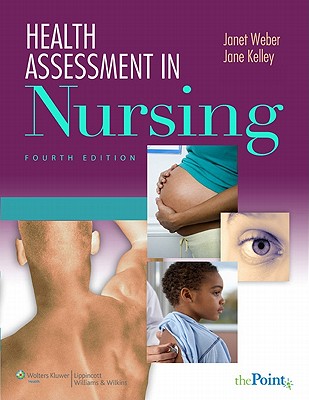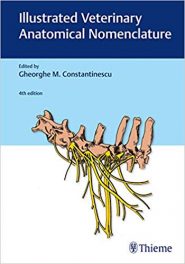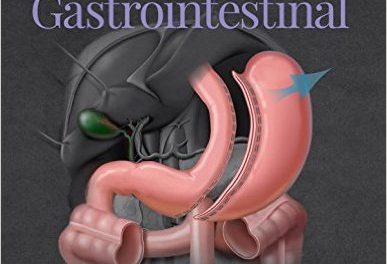 Authors: Janet Weber and Jane H. Kelley
Authors: Janet Weber and Jane H. Kelley
Publisher: Wolters Kluwer | Lippincott Williams & Wilkins – 881 pages
Book Review by: Nano Khilnani
This book for students of nursing and professionals in this field has online resources for students and instructors. The resources for students are: Heart and Breath Sounds, Watch and Learn video clips, and a full text of this book. The resources for instructors include the first two items named above, plus: Test Generator, a PowerPoint presentation and more.
Go to this website http://thepoint.lww.com/weber4e, then use the access code available in the scratch-off label provided in the inside front cover of this book for purchasers. A Lab Manual – which can be placed in a ring binder – and a Student Resource DVD-ROM are also included with this book.
The first edition came out in 2003, and over the years subsequent editions have had additions, improvements and enhancements. At the outset of this review, we want to mention that the four basic themes of this textbook are:
• Health Promotion – an important baseline concept, along with client wellness
• Culture – consideration of culture is a high priority of this book
• Lifespan – more information on assessment of older patients has been added
• Family and Community – special chapters on these are included in this book
The fourth edition of this voluminous book with 34 chapters on various assessment aspects in nursing care covers four basic areas, detailed in Units, namely:
I. Nursing Data Collection, Documentation, and Analysis, with chapters 1 to 5
II. Integrative Holistic Nursing Assessment, with chapters 6 to 12
III. Nursing Assessment of Physical Systems, with chapters 13 to 28
IV. Nursing Assessment of Special Groups, with chapters 29 to 34
Unit I helps the student focus on the importance of collecting, documenting and analyzing data as part of the practice of nursing. Data can be subjective and objective. Learning and using critical thinking skills is an important objective of this Unit.
Unit II is designed to assist student nurses assess the patient’s mental and psychological state, and some aspects of physical condition including vital signs. Its coverage also includes evaluating the level of pain, if any, as well as determining if he or she is a victim of violence. Other aspects of assessment in this Unit are: culture, nutrition level and religious and spiritual practices.
Unit III directs the student to assess patient’s body systems, with separate chapters that cover: hair, nails and skin; head and neck; eyes; ears; mouth, throat, nose and sinuses; thorax and lungs; breasts and lymphatic system; heart and neck vessels; peripheral vascular system; abdomen; female genitalia; male genitalia; anus, rectum and prostate; musculoskeletal system; nervous system; and putting it all together.
Unit IV assists the student in assessing special groups of patients, which include: childbearing women, newborns and infants, children and adolescents, frail elderly clients, families, and communities.
The organization and layout of material in the 34 chapters in this book has been optimized for easier learning and retention. Text and graphics are presented with a balanced approach. In other words, you will not find large swaths of text.
Instead you will find smaller amounts of text with headings in different typestyles interspersed with colorful graphics such as bullet points in shaded areas, charts, drawings, illustrations, photos, and tables.
The assessment chapters contain the following items:
• Structure and Function
• Health Assessment
• Collecting Subjective Data: The Nursing Health History
• Collecting Objective Data: Physical Examination
• Validating and Documenting Findings
• Analysis of Data
• Diagnostic Reasoning: Possible Conclusions
• Case Study
This book provides valuable reference information in its 10 Appendices labeled A to J. This information is in the form of charts, checklists of problems, diagnoses, guides, illustrations, questionnaires, tables, and tools. These cover various aspects of health, including: disease prevention and control; food and nutrition, pain assessment, physical condition, physical self-examinations, and risk assessment
This book has been made authoritative by the fact that 11 specialists in various areas of nursing contributed material to this book, and 72 others reviewed that material.
The accompanying 328-page Lab Manual contains exercises and activities designed to engage the learner with things to do and questions to answer. Multiple-choice tests, tables with questions relating to the student’s level of mastery of material in a given chapter of the textbook and other tools in this manual help the reader retain information. The authors have produced an outstanding textbook, lab manual, DVD, and online resources.
Janet Weber, RN, EdD is a professor in the Department of Nursing at Southeast Missouri State University in Cape Girardeau, Missouri.
Janet H. Kelley, RN, PhD is an adjunct professor in the School of Nursing at the University of Mississippi Medical Center in Jackson, Mississippi.






